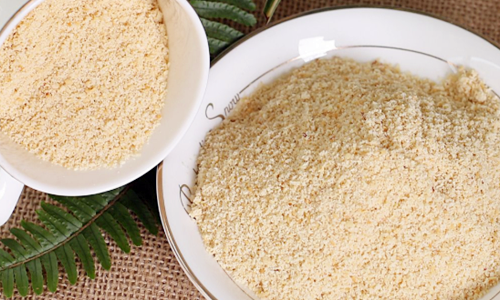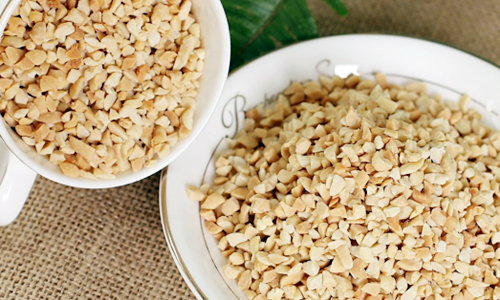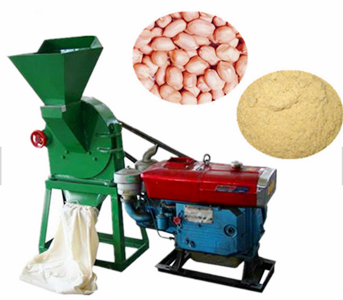Groundnut Meal Production Process Introdcution
Groundnut meal is delicious and can be added to various foods as an additive to improve the nutritional value, groundnut powder can be directly added to beverages or milk as a suspension to make various beverages, or as an auxiliary to barbecue to increase the flavor of the roast.
Peanut is rich in linoleic acid and other unsaturated fatty acids necessary for the human body, which is particularly beneficial to the body’s absorption and digestion. Linoleic acid cannot be synthesized in the human body, but it can regulate the physiological functions of the human body, promote growth and development, degrade cholesterol, and prevent Hypertension and atherosclerosis play an important role. Peanut protein has relatively complete amino acids, its content is higher than animal protein, and it does not contain cholesterol. It is a high-quality vegetable protein.
Groundnut meal is made from peanut, it just a physical change in form (like ice into water), does not affect its properties and original nutrition.
Groundnut Meal Production Process Flow
1.Raw Peanut→ 2. Groundnut Screening → 3. Decontamination → 4. Groundnut Roasting Machine → 5. Groundnut Peeling Machine → 6. Press Degreasing → 7. Crushing → 8. Inspection → 9. Packaging → 10. Storage


Groundnut Meal Production Method
1. Cook groundnut with roasting machine, remove the red skin after the peanuts are roasted, then you can use a dry mill to grind them into fine powder.
2. Roast peanuts at 80℃ for 4 minutes to remove the red skin, and then immerse them in 2 liters of 30 ℃ saturated salt solution for about 1 minute. Heat the peanuts in 15 liters of hot water at 100 ℃ for 20 minutes. After rinsing with water, immerse it in 2 liters of 90℃ hot water for about 30 minutes, and then crush this peanut suspension into a slurry. Finally, it is spray-dried into a nearly white peanut flour that can pass through a 300 mesh sieve. Peanut meal processed by this method does not produce off-flavors due to changes in protein or fat content.

3. Drain each kilogram into the 3 liters of 40 ℃ saturated salt solution for about 1 minute and roast peanut at 90 ℃ for about 18 minutes. Then put the peanuts in 1.5 liters of water and heat-treat at 50 ℃ . After 20 minutes, rinse with water, put it into 1.5 liters of water for the second time, and heat-treat at 50 ℃ for 20 minutes. After the peanuts were rinsed again, they were placed in 1.5 liters of water a third time and treated in an autoclave at 120 ℃ for 30 minutes. Then the peanuts are crushed into a slurry and be spray-dried. The peanut powder processed by this method is light yellow, free powder, and has no odor.